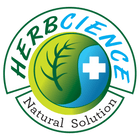Essential oils are the aromatic compounds found in different parts of plants. They have been an integral part of human civilization due to their extensive usage ranging from antimicrobial to anti-carcinogenic. In ancient times from 4500 BC, essential oils have been donated for usage in perfumes, food additives, and medicines.
Also, each plant has its unique composition of essential oils and a signature aroma. Steam Distillation, Solvent Extraction, CO2 Extraction, Maceration, Enfleurage, Cold Press Extraction, and Water Distillation are the process where the essential oil is extracted.
Importance Of Essential Oils In The Current Era
Due to current work patterns and lifestyles, common problems like headache, anxiety, and the common cold constitute 40 percent of emergency visits. They also constitute up to 85 percent of the total number of diseases that require medication. So, self-medication will be the first choice and habitual overuse will be the next.
But, such practices are the reason for Acetaminophen toxicity, Renal toxicity, Opiate addiction, etc. Young children with undetected mood disorders easily get into industrial solvents abuse. There is an opportunity to solve the above problems by the knowledge of appropriate usage of essential oils. So let’s take a peek.
COMMON ESSENTIAL OILS AND THEIR USAGE
- Lavender– It is a good anti-bacterial and anti-viral. So, commonly used for treating sinusitis and vaginal infections. It has also compounds that have masked narcotic effects thus helpful in anxiety and mood disorders.
- Oregano– Used as a taste enhancer and flavoring agent in foods. But, it is also helpful in yeast infection, cholesterol disorders, and as an antioxidant.
- Peppermint– Useful as Antispasmodic, improves digestion anti-bacterial and pectolytic( reduces secretion). Essential oils help in skin diseases associated with itching.
- Sandal wood-Useful for its anti-inflammatory effects and Anxiolytic properties.
- Bergamot– Commonly used as an anthelmintic, antiseptic, and wound-healing agent.
- Rose – Proven for its efficacy in reducing low back pain in pregnant women. But also helps as an antidepressant, psychological relaxation, and sexual dysfunction.
- Chamomile– Commonly used for hay fever, inflammation, muscle spasm, menstrual disorders, insomnia, ulcers, wounds, gastrointestinal disorders, Rheumatic pain, and also in Hemorrhoids.
- Tea tree– Extensively useful in a wide range of skin problems with anti-fungal, anti-viral, and anti Protozoal activity. Commonly used for Acne, Seborrheic dermatitis, chronic Gingivitis, and for increasing wound healing. It also helps in cancer.
- Jasmine– Used in Aromatherapy for increasing alertness, Behavioral arousal. In a study, it was found to improve oxygen saturation and also in diastolic blood pressure.
- Lemon– Proven to be useful in Nausea and vomiting associated with pregnancy.
A Pinch Of Caution
There are around 150 types of essential oils that are commonly available and have a wide range of medicinal benefits. It should also be remembered that if they are repeatedly used indiscriminately they may cease to be effective.
Hence appropriate lifestyle modification is the central part of well-being. But strong aromatic compounds are part of essential oils that can be allergic to some. Hence when we are using an oil for the first time it should be applied on a small patch to test for sensitivity.
Technological Advancements And Future Trends
Due to increasing awareness regarding the need for holistic healthy living essential oils is the most sought-after substance. Insecticides, Pesticides, Anti-bacterial, and food additives have essential oils in them. So, Nano Encapsulation technology uses essential oils for the preservation of food items.
Nanoencapsulation of essential oils also prevents microbial action on food. Also, medical usage of essential oils is on a promising journey of rediscovery that can reduce the dependence on synthetic drugs which in turn reduces the risk of diseases like Cancer.
Challenges And Solutions
Because of the current trend of increasing awareness of the benefits of essential oils, the demand will put a lot of pressure on the environment. This problem can be solved by abundantly available local solutions in a particular geographic area.
Hence one should not only know about essential oils but also have a connection with their surrounding environment. Harnessing the gifts of nature in a sustained manner along with scientific research for multiple applications for a single essential oil is the way forward for Holistic Living.
D.I.Y Of Essential Oil
Peppermint Oil
Principle: Peppermint has volatile oils. The base oil can absorb essential help. This helps in preservation.
Uses: Headache, Muscle spasm, Nausea, Abdominal pain, Running Nose.
Avoid: Pregnant women should avoid this. Because this can induce premature contractions.
Steps to prepare 100 ml of Peppermint oil
- Collect fresh peppermint leaves around 25gms
- Gently crush them in a glass jar to make them crumble.
- Add 100 ml of Coconut oil or Sesame oil or Olive oil as per your Liking and cover it with a lid.
- Keep it in Indirect sunlight for 10 days and mix it 3 times a day by shaking it.
- Take the oil out in a boiling pan and heat for 10 mins followed by filtering and airtight packing.
Usage: For headaches and muscle pain apply a few drops and massage gently on the affected area.
For Running nose 1 drop of oil in the nose gives relief from congestion, it can also be added to a steamer for inhalation.
Conclusion
Just as we have knowledge of Over counter drugs for common ailments, similarly knowledge of the medicinal properties of essential oils can improve the quality of life. But always be in touch with a specialist to constantly update about various usages and possible side effects.
Preparing by oneself can give the best results as increasing demand and reduced availability can disturb the authenticity. So always avoid essential oils that are cheap or have abnormal flavor. Keep in touch with nature for its amazing wonders.
References
- https://www.taylorfrancis.com/books/mono/10.1201/9781420063165/handbook-essential-oils-husnu-baser-gerhard-buchbauer
- https://europepmc.org/article/NBK/nbk235856
- https://www.ncbi.nlm.nih.gov/pmc/articles/PMC2948777/
- https://pubmed.ncbi.nlm.nih.gov/20336210/
- https://pubs.acs.org/doi/abs/10.1021/jf980087w
- https://www.proquest.com/openview/0fcb7e61eaa5900ea403b14471dd0145/1?pq-origsite=gscholar&cbl=54977
- https://www.tandfonline.com/doi/abs/10.1080/14786419.2017.1399387
- https://www.ingentaconnect.com/content/ben/mrmc/2016/00000016/00000009/art00005
- https://journals.sagepub.com/doi/full/10.1177/2156587216654601
- https://www.ncbi.nlm.nih.gov/pmc/articles/PMC5511972/
- https://www.spandidos-publications.com/mmr/3/6/895
- https://onlinelibrary.wiley.com/doi/abs/10.1111/j.1365-4632.2012.05654.x
- https://journals.sagepub.com/doi/abs/10.1177/1934578×1000500136
- https://www.ncbi.nlm.nih.gov/pmc/articles/PMC4005434/
- https://www.sciencedirect.com/science/article/abs/pii/S0956713518300240



